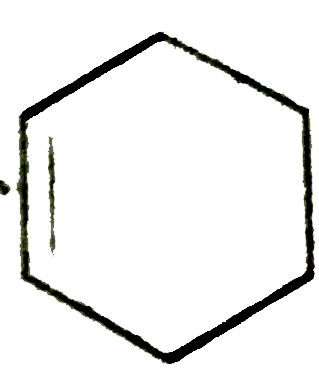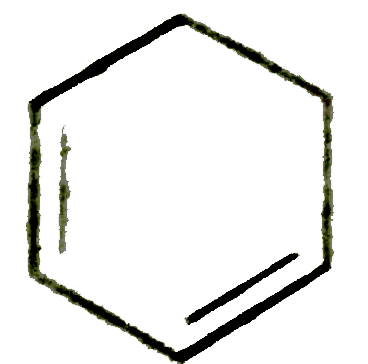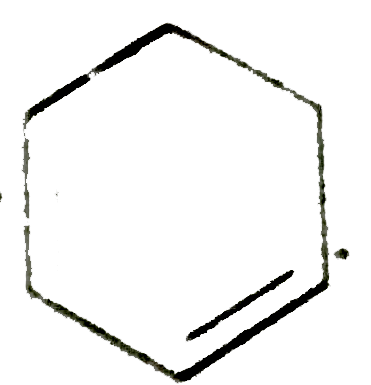The ionic resonance energy of C−H bond is ≈6.0kcalmol−1. The EN of H is 2.1. Calculate EN of carbon ? Given : ΔC−H≈6.0kcalmol−1
(χC−χH)=0.208[EA−B−√EA−A×EB−B]12
=0.208×(ΔC−H)12
=0.208×(6.0)12=0.208×2.5=0.52
χC−χH=0.52
∴χC=0.52+2.1=2.62
Topper's Solved these Questions
- PERIODIC CLASSIFICATION OF ELEMENTS AND GENERAL INORGANIC CHEMISTRYBOOK - CENGAGE CHEMISTRYCHAPTER - PERIODIC CLASSIFICATION OF ELEMENTS AND GENERAL INORGANIC CHEMISTRYEXERCISE - Solved Examples
34 Videos
- PERIODIC CLASSIFICATION OF ELEMENTS AND GENERAL INORGANIC CHEMISTRYBOOK - CENGAGE CHEMISTRYCHAPTER - PERIODIC CLASSIFICATION OF ELEMENTS AND GENERAL INORGANIC CHEMISTRYEXERCISE - Ex 1.1
14 Videos
- P-BLOCK GROUP 14 - CARBON FAMILYBOOK - CENGAGE CHEMISTRYCHAPTER - P-BLOCK GROUP 14 - CARBON FAMILYEXERCISE - Exercises Archives (Subjective)
9 Videos
- PURIFICATION OF ORGANIC COMPOUNDS AND QUALITATIVE AND QUANTITATIVE ANALYSISBOOK - CENGAGE CHEMISTRYCHAPTER - PURIFICATION OF ORGANIC COMPOUNDS AND QUALITATIVE AND QUANTITATIVE ANALYSISEXERCISE - Assertion Reasoning Type
5 Videos
Similar Questions
The heat of combustion of ethene gas is 330 Kcal mol−1 calculate >c=c< bond energy (in kcal/mol) assuming that bond energy of C-H bond is 93.6 Kcal mol−1
Given :ΔH∘f for CO2(g)andH2O(l) are -94.2 and -61 Kcal mol−1 respectively.Heat of atomisation of carbon and hydrogen are 150 and 51.5 Kcal mol−1 respectively.
View SolutionHeat of hydrogention of
 is 29 kcal mol−1 and that of
is 29 kcal mol−1 and that of  is 56kcalmol−1. Calculate the resonance energy of
is 56kcalmol−1. Calculate the resonance energy of 
View Solution
Knowledge Check
The bond energy of C-C bond in Kcal/mol is -
A58B83C145D192The bond energy of H2 is 104.3kcalmol−1 . If means that :
A104.3kcalheat is needed to break up 'N' bonds in N molecules of H2.B104.3kcal heat is needed to break up 6.023×1023 molecules into 1.2046×1024 atoms of HC104.3kcal heat is evolved during combination of 2N atoms of H to form N molecules of H2.Dall of theseThe bond energy of H2 is 104.3k.calmol−1. It means that
A104.3 K. cal heat is released during breaking up 'N' bonds in N molecules of H2B104.3 K. cal heat is needed to break up 6.023×1023 molecules into 1.2046×1024 ayoms of HC104.3 K. cal heat is evolved during combination of 2N atoms of H to form N molecules of H2DBoth 2 and 3.
The average energy required to break a P-P bond in P4(s) into gaseous atoms is 53.2kcalmol−1. The bond dissociation energy of H2(g) is 104.2kcalmol−1,ΔH0f of PH3(g) from P4(s) is 5.5kcalmol−1. The P-H bond energy in kcal mol−1 is [ Neglect presence of Van der Waals force in P4(s)]
View SolutionThe bond energy of ann O-H bond is 109 kcal/mol. When 1 mole of water is formed, then
View SolutionThe dissociation energy of CH4(g) is 360 kcal mol−1 and that of C2H6(g)is620kcalmol−1. The C-C bond energy
View SolutionThe lattice enthalpy of KI will be, if the enthalpy of (I) Δ H− (KI) = -78.0 kcal mol−1 (II) Ionisation energy of K to K+ is 4.0 eV (III) Dissociation energy of I2 is 28.0 kcal mol−1 (IV) Sublimation energy of K is 20.0 kcal mol−1 (V) electron gain enthalpy forI to I− is -70.0 kcal mol−1 (VI) Sublimation energy of I2 is 14.0 kcal mol−1 (1 eV =23. 0 kcal mol^-1)
View SolutionΔfH value for H2O is - 69 kcal mol−1.Then that of formation of OH− ion (ΔnH=−13.7 kcal )
View Solution
